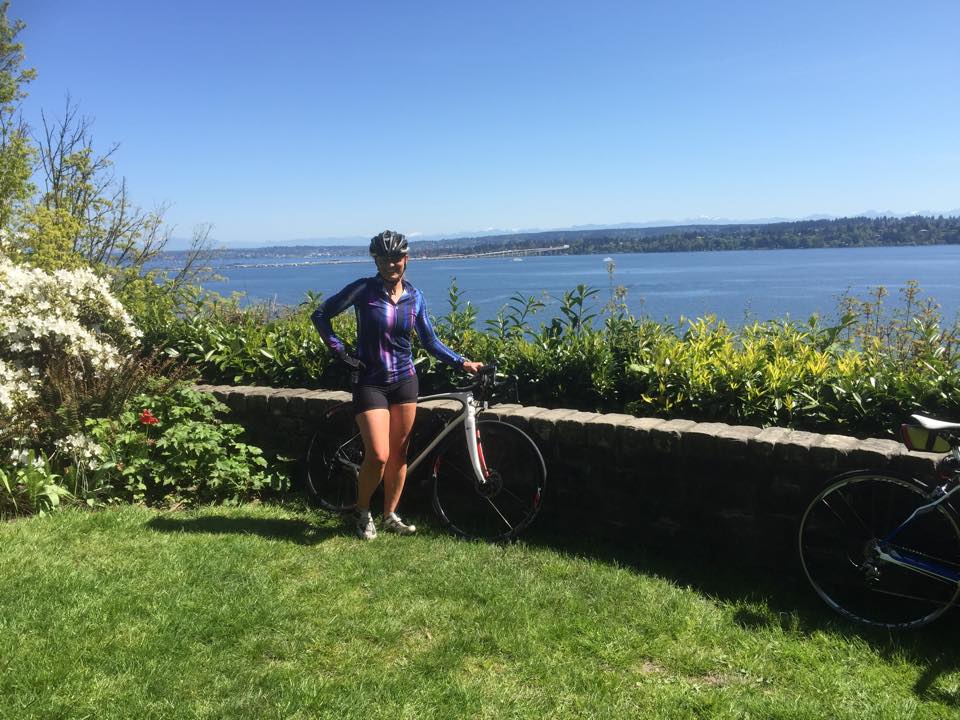Strengthening Your Heart and Lungs

 I’m going to give you a little Exercise Physiology lesson today…all about strengthening your heart and lungs!
I’m going to give you a little Exercise Physiology lesson today…all about strengthening your heart and lungs!
The cardio-respiratory system or the heart and lungs is responsible for the distribution of oxygen throughout the body. Oxygen, the gas that makes up 21% of the air we breathe, is critical to life. In fact, tissues will start to die without oxygen in about 6 minutes. So the efficiency of the heart and lungs and how they work together is very important both during rest and exercise.
This system functions by first causing us to breathe using our respiratory muscles. Air then enters our bodies and travels to our lungs. The oxygen is diffused through our lungs and into our blood stream and travels towards the heart. The heart is a strong enough muscle to be able to pump the blood to the entire body where tissues will extract the oxygen to use it to produce energy. Carbon Dioxide, a toxic waste product, is produced and the body must then dispose of it so it travels back up to the heart, then to the lungs and we exhale it. This entire process is an ongoing system that of course, occurs more rapidly during exercise. There are a few things that can make this system function more or less effectively.
In order for oxygen to travel through the blood stream, hemoglobin, the protein molecule in red blood cells, must be present. Hemoglobin will bind to oxygen and oxygen will then be capable of traveling throughout the body. Fortunately, hemoglobin has a high affinity for oxygen and will bind to it rapidly. However, hemoglobin has a much higher affinity to carbon monoxide, a by-product of cigarette smoke. This explains why smokers have such difficulty catching their breath or being capable of intense activity. The oxygen is there for them but the hemoglobin has bound to the carbon monoxide and therefore, the oxygen is incapable of traveling to the bodily tissues. Smokers, once they quit, will notice their energy levels improve dramatically.
In contrast to smoking, exercise will drastically improve the efficiency of the cardio-respiratory system in many ways.
One, your heart is a muscle just like any other muscle and if you train it, it becomes stronger. Therefore, with each contraction, your heart can pump out a whole lot more blood therefore, sending a lot more precious oxygen to the tissues. In addition, you may not know this, but as you get fitter, your total blood volume will increase. In fact, you may be able to store an extra 1.5 liters of blood in your body. With more blood that means more hemoglobin and more oxygen-carrying capacity. In fact, after about 6 months of exercise, you can expect your maxVO2, an indicator of your cardio-respiratory fitness, to improve by 15-20%! In addition to all these improvements you can also expect your lungs and respiratory muscles to get stronger through exercise. You will have an increased ability to ventilate and to get the oxygen where it needs to go.
There are a couple things you can do during activity to ensure maximum effectiveness of your cardio-respiratory system:
- One is the use of a proper warm-up. The heart and lungs do not respond very well going from inactivity to intense exercise. They require a gradual stimulation by incorporating a low intensity 5-10 minute active warm-up. So if you’re going to go out for a jog, start with a short walk first. If you’re going to cycle, start in an easy gear. You’ll find your heart and lungs will be prepared for the intensity and you will perform much better.
- Then progress slowly into your peak training zone.
- In addition to a proper warm-up, a proper cool-down will assist the cardio-respiratory system in removing any waste products and will prevent blood-pooling which happens when you stop exercise too quickly and the blood collects in the lower extremities causing sensations of dizziness. A 5-10 minute low intensity, active cool-down will gradually slow down the heart and the lungs and will be less stressful on your entire body.
There is a lot going on inside your body behind the scenes, when you commit to a consistent exercise regime it will make you stronger in many ways and ultimately, make everything you do easier! So you know what they say…just do it!
Sherri McMillan, M.Sc. has been inspiring the world to adopt a fitness lifestyle for over 25 years and has received numerous industry awards including International Personal Trainer and Fitness Presenter of the Year. She is the author of five books including “Go For Fit – the Winning Way to Fat Loss” and “Fit over Forty” and is the featured presenter in various fitness DVDs. She is the owner of Northwest Personal Training in downtown Vancouver and can be seen running, hiking or cycling with her two children, Brianna and Jackson. She can be reached at www.nwPersonalTraining.com or www.ShapeupwithSherri.com
Note: As an avid Columbian reader, you can redeem a 2 week pass at her world-class training studio to help get you started. Contact 360.574.7292 for more details.
